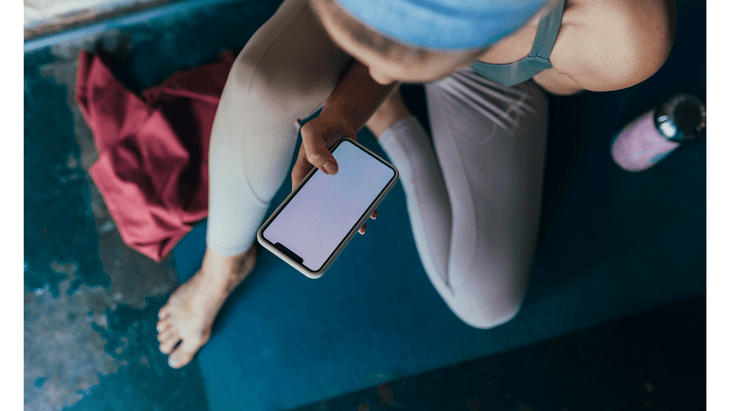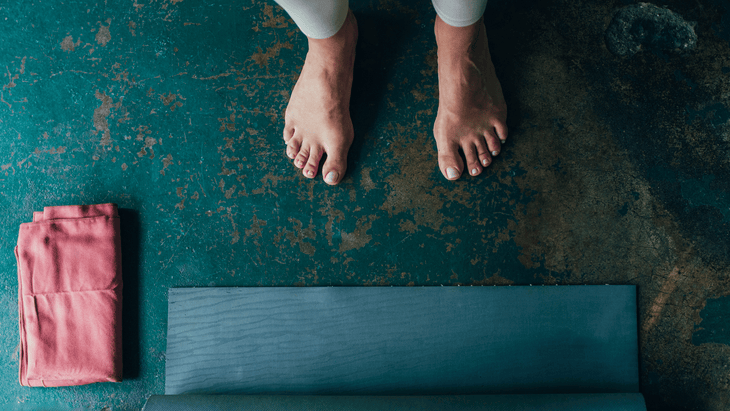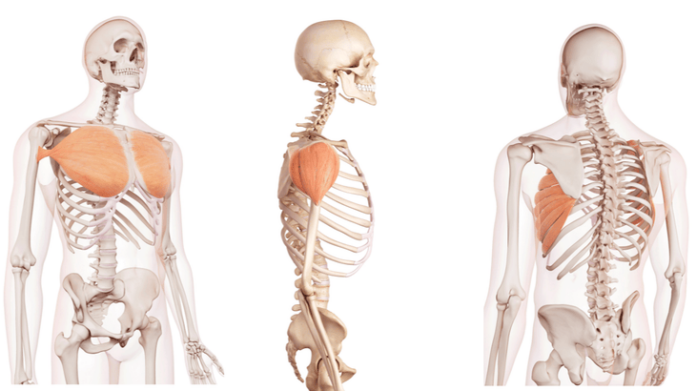“], “filter”: { “nextExceptions”: “img, blockquote, div”, “nextContainsExceptions”: “img, blockquote, a.btn, a.o-button”} }”>
Heading out the door? Read this article on the new Outside+ app available now on iOS devices for members!
>”,”name”:”in-content-cta”,”type”:”link”}}”>Download the app.
Just about everyone who practices vinyasa has, at some point, probably experienced shoulder pain in yoga. Perhaps you chalked it up to taking one too many Chaturangas, flipping your dog a little too enthusiastically, or hunching over your computer for too many hours before slipping away to class.
Shoulder pain in yoga is common enough that you’d think there would be an easy fix—some game-changing shift in your alignment or magic stretch you can do to make the discomfort go away. And sometimes the answer to your aches is simple—an underutilized muscle or an irritated or overworked tendon that resolves with rest. But sometimes the causes of shoulder pain are less direct and more mysterious than in other areas of the body.
That could be because you’re less familiar with your shoulder muscles than, say, your quads or glutes. Or it may be a result of that nagging ache in your upper back or arm, or pinch inside the joint, is out of sight. Or perhaps it’s due to the shoulder complex being more, well, complex than other major joints. After all, it consists not just of the junction between our upper arm and shoulder blade but multiple shallow connections between the upper arm bone, shoulder blade, collarbone and sternum, as well as the informal joint between shoulder blade and rib cage.
Obviously, pain is a signal that shouldn’t be ignored, especially if it follows you off the mat or fails to resolve. Consider consulting with a physical therapist or other healthcare professional in any of these instances.
If your shoulder discomfort is slight, however, and difficult to isolate to a single pose or body position, there are some surprising causes of shoulder pain you can investigate.
4 Overlooked Causes of Shoulder Pain in Yoga

1. Head and Neck Posture
By now you’ve likely heard about or experienced tech neck, the forward-leaning head posture that results from peering at screens for hours each day. But you might be surprised to learn it can also create issues in your shoulders.
The Problem: The displaced weight of your head leaning forward causes some shoulder muscles to work overtime, namely those that attach to your shoulder blades, including upper trapezius and levator scapulae muscles. The farther forward your head leans, and the longer it stays there, the greater the tension on those muscles. The crankier they get, the more tension you might experience along the tops of your shoulders and along your shoulder blades.
The Fix: Unsurprisingly, the fix is to find ample opportunities to return your head to an upright position, easing the load on these muscles. When forward head posture is your default, though, it can be difficult to recognize a truly neutral position for your head and neck.
Spend time resetting your perception of neutral through tactile feedback from sitting or standing with the back of your head against a wall. Once that upright position feels more familiar, you can take your postural awareness away from the wall and apply it to other sitting and standing positions.
2. Mid-Back Mobility
Your thoracic spine, or mid-back, naturally rounds forward. But posture that’s regularly slumped can exaggerate that curve and extend it to the upper back. This displaces the resting position of your shoulder blades and causes them to move forward and down.
The Problem: This misalignment means stretching your arms overhead—whether to move into Downward-Facing Dog or reach for the top shelf—now requires your shoulder joints to move more than usual to pick up the slack. These altered forces decrease the space between your upper arm bones and the outer edge of your shoulder blades, contributing to a pinching sensation when you reach overhead.
The Fix: Again, the remedy is finding regular opportunities to move out of the slump. Thanks to its attachment to the rib cage, your mid-back is naturally not as mobile as your neck or low back, but regularly practicing active backbends, such as Locust, as well gentle twists and side bends can go a long way to restoring mobility in your mid-back. And that, in turn, creates a more neutral resting position for your shoulders, which translates to more relief.
3. Breath Mechanics
Breathing is such an involuntary process that we seldom give it conscious attention. For the most part, that’s a good thing. (Given how easy it is to forget where you’ve put your keys or parked your car, imagine having to remember to breathe!)
But this also means unhelpful breathing patterns can sneak up on you, making it difficult to both recognize and reverse these habits.
The Problem: One such pattern is overusing muscles during relaxed breathing that should only be active during occasional labored breathing. This typically happens when you’re running fast or hiking uphill. It can also result from a sustained habit of locking down the core too much during yoga or workouts.
Some of these “accessory breathing muscles”—including the scalenes, pectoralis minor, and upper trapezius—attach to the top ribs or shoulder blades. The resulting tension from overactivity in these muscles can cause the neck and shoulder muscles to feel stiff or tight.
It can also alter the relative positions of the top ribs and shoulders, changing the way the shoulders move and function and, over time, contributing to tenderness at the front of your shoulder joint or that telltale pinch as your arms lift overhead.
The Fix: At some point in your experience of yoga, you’ve probably been encouraged to “breathe into your belly” or “practice diaphragmatic breathing” or “breathe low and wide.” These cues can help you breathe in a more easeful way, especially when you’re at rest or moving slowly and gently without need for strong abdominal support. This, in turn, encourages your accessory breathing muscles to do less and your respiratory diaphragm to do more.
If you still struggle to override your habit of breathing into your upper chest, try lying on your back and placing your hands on your belly or low side ribs. That will give you tactile feedback on the movement your breath creates.

4. Lower Body Stability (Or Lack Thereof)
Imagine a time when you tentatively inched your way onto an icy sidewalk or a wet floor. Whether you realized it or not, your shoulders probably crept toward your ears as you braced yourself against uncertain footing. Chances are that lack of stability is happening on the mat more often than you think—and causing more problems than you know.
The Problem: As a yoga teacher, I have a front-row seat to students wobbling in balancing poses such as Tree Pose (Vrksasana) and trying to transition from High Lunge to Warrior 3 (Virabhadrasana III). You’d be surprised by how many times they unknowingly recruit their shoulder muscles to do the stabilizing work of their core and legs.
The Fix: If you find that your neck or shoulders feel cranky after a few tough standing pose transitions, try dialing back the difficulty. Rest your tiptoes on the mat during balancing postures or place your fingertips on blocks or a wall to support you as you slowly move in between poses. With time and repetition, you’ll train your lower body to feel so strong and sturdy, you’ll trust your steadiness, no matter how fast you move or how tenuous your footing.











